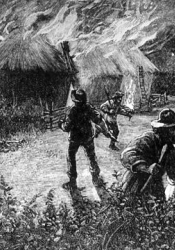The Palace of Westminster
Located in London, the Palace of Westminster holds the two parts of Parliament, the House of Commons and the House of Lords. They are often referred to as the Houses of Parliament. The palace is close to the River Thames. The architecture is in the neo-Gothic style. The oak roof was a major achievement in medieval woodworking. The Palace of Westminster is often considered a symbol of the magnificence of constitutional monarchy and the British Parliament set the standard for dual parliamentary systems. It was built in 1016, and rebuilt after the fire of 1834. This would be where laws like the Corn Laws of 1815 would be enacted. Early Parliament represented only the wealthy landowners and not the common people.
Sources:
Centre, UNESCO World Heritage. “Palace of Westminster and Westminster Abbey Including Saint Margaret's Church.” UNESCO World Heritage Centre, https://whc.unesco.org/en/list/426.
Palace of Westminster Fact Sheet. Restoration and Renewal. Houses of Parliament. Retrieved 10 September 2019.
Parent Map
Coordinates
Longitude: -0.122008323669

